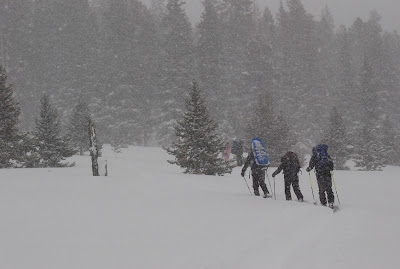
Friday. A trip to visit with Jack Jensen who is preparing to display his artwork at Sputnik's, a restaurant across the street from Mutiny Now. The evening finds me standing alongside the truck behind the house, doors swung wide open, stereo blasting, cigar in hand and bright stars overhead

First up was Joy Division at the Paradiso Club in Amsterdam on January 11, 1980, a soundboard recording lasting a little over an hour. The bootleg recording album cover is misdated as November 11th. Comparisons are made between them and their contemporaries, Echo & The Bunnymen. There are some similarities. But the similarities are even greater when they are compared to the modern band Interpol, which I will be seeing live in little over a week from now. Interpol is a clone of Joy Division.
Formed in the wake of the punk explosion in England, Joy Division became the first band in the post-punk movement by later emphasizing not anger and energy but mood and expression, pointing ahead to the rise of melancholy alternative music in the '80s. Though the group's raw initial sides fit the bill for any punk band, Joy Division later incorporated synthesizers (taboo in the low-tech world of '70s punk) and more haunting melodies, emphasized by the isolated, tortured lyrics of its lead vocalist, Ian Curtis. While the British punk movement shocked the world during the late '70s, Joy Division's quiet storm of musical restraint and emotive power proved to be just as important to independent music in the 1980s.
Despite the band's growing success, vocalist Ian Curtis was beset with depression and personal difficulties, including a dissolving marriage and his diagnosis with epilepsy. Curtis found it increasingly difficult to perform at live concerts, and often had seizures during performances.
On the eve of the band's first American tour in May 1980, Curtis, overwhelmed with depression, committed suicide. Joy Division's posthumously released second album, Closer (1980), and the single "Love Will Tear Us Apart" became the band's highest charting releases. After the death of Curtis, the remaining members reformed as New Order, achieving critical and commercial success.
Friendship that lasts forever
While flesh withers and dies
Burning with such energy
Setting us on fire
Finds he's the last one standing
Feeling so lonely
Bound by a white hot passion
Three that sound as one





The main act for the evening were Nirvana, performing live at The Palace in Melbourne, Australia on February 1, 1992. This was a few months after the release of Nevermind which catapulted them into the spotlight, something Kurt Cobain was never comfortable with.
This is an excellent sounding recording. A fan who goes by the name of thir13en, remastered the complete Feb 1 concert at The Palace in Melbourne. In the notes to the CD, he said: "The source was typical pre-FM; thin, light and bright. So it got beefed quite a bit and maximized. Sounds big, raucous, the way I think they should sound."
I agree completely!

This is what Wikipedia says about their sudden rise to stardom following the release of Nevermind:
Initially, DGC Records was hoping to sell 250,000 copies of Nevermind, which was the same level they had achieved with Sonic Youth's Goo. However, the album's first single "Smells Like Teen Spirit" quickly gained momentum, thanks in part to significant airplay of the song's music video on MTV. As it toured Europe during late 1991, the band found that its shows were dangerously oversold, that television crews were becoming a constant presence onstage, and that "Smells Like Teen Spirit" was almost omnipresent on radio and music television. By Christmas 1991, Nevermind was selling 400,000 copies a week in the US. In January 1992, the album displaced Michael Jackson's Dangerous at number one on the Billboard album charts, and also topped the charts in numerous other countries. The month Nevermind reached number one, Billboard proclaimed, "Nirvana is that rare band that has everything: critical acclaim, industry respect, pop radio appeal, and a rock-solid college/alternative base." The success of Nevermind not only popularized grunge, but also established "the cultural and commercial viability of alternative rock in general".
On the Australian leg of this tour, apart from Melbourne, Nirvana also played in Adelaide and Sydney. Melbourne was the last stop before the band took a press trip to Singapore and then they played Tokyo and Osaka. Of the fan recordings that have surfaced of the tour - for example Down Under '92, Legacy, Put The Money Down, Territorial Possession, Sydney 1992, Noizemaker, Live In Japan, Last Concert In Japan and Pissing Factory - two titles stand out for their overall good sound: Mindblower (Melbourne, Feb 1, 1992) and Fire Extinguisher (Tokyo, Feb 19, 1992).
Download it here:





















































